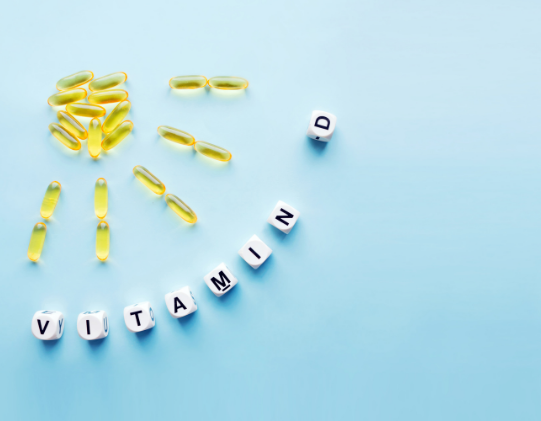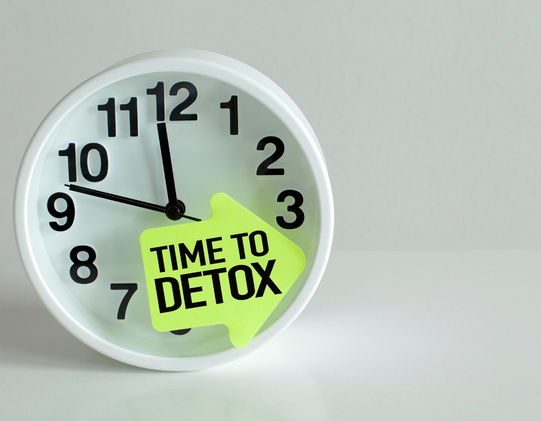
Vitamin D FAQ
March 4, 2024
How to Develop a Growth Mindset
March 5, 2024
Finding the fountain of youth is part of the dream, isn’t it?
Stopping or reversing the effects of aging for a younger appearance, stronger body, more energy, better health, etc. Who wouldn’t want that?!
This is why there is always a new pill/powder/makeup/diet that promises to turn back time. Sadly, that promise is almost always just clever marketing. However, there are things you can do that can help reduce your body’s age and attain:
- Younger-looking skin
- A leaner, stronger, more mobile and functional body
- More energy, stamina and endurance
- Better focus, concentration and memory
- Better sleep
- Fewer health issues/concerns
None of this will magically happen overnight. BUT, when you consistently put the following strategies into play, you can slow down the aging process! Here’s 6 ways to reduce your body age:
1. Lift Weights
Lifting weights can be one of the best ways to increase your health span and improve your quality of life. In fact, muscle strength is one of the strongest predictors of how long and how well you will live. The fact is, regular resistance training can help maintain muscle and bone mass as you get older. It can also boost mood, improve cognitive function, protect against injuries and improve the overall quality of life. Lifting weights doesn’t mean you have to lift like a bodybuilder to reap the rewards. There just needs to be resistance so whether that means you are lifting heavy or using your own body weight, you will see benefits.
2. Incorporate Cardio
Cardio is often regarded in the cardiovascular health arena but it also improves the health of your mitochondria. If you’re looking for anti-aging benefits then aerobic exercise should be at the top of your list. Regular aerobic exercise stimulates a process called mitochondrial biogenesis, which means increasing the size and number of mitochondria. Basically this means that while resistance training increases muscle size and strength, one of the key physiological adaptations to regular aerobic exercise is an increase in mitochondria number and improvement in mitochondrial function. The good news is that you don’t have to spend hours doing it, shorter bouts of high-intensity interval training will do the trick.
In a recent study published in the European Heart Journal, researchers from Germany found that both traditional endurance training and high-intensity interval training led to a two- to three-fold in activity of an enzyme called telomerase, which prevents the shortening of telomeres.(4) In simple terms, aerobic exercise led to increased telomere length, literally turning back the clock on the participants’ body age.
For most people, a good rule of thumb is to do 2 – 3 cardio sessions (either traditional endurance exercise, interval training, or a combination of the two) each week.
3. Incorporate Fasting
Intermittent fasting (IF) —and especially time-restricted feeding (TRF)—is one of the most popular health and wellness trends and for good reasons. IF is linked to many health benefits and it can be paired with any diet (e.g., Paleo, Mediterranean, Low FODMAP).
Dr. Valter Longo, one of the leading IF researchers (whose particularly IF specialty is fasting-mimicking diets or FMD for short), wrote a book titled The Longevity Diet, which suggests a clear tie between IF and longevity. For example, Dr. Longo’s research has revealed that FMD, which entails following a low-calorie, low-protein diet for a 5-day period during a monthly cycle, significantly reduces biomarkers for aging, increases regeneration markers, and promotes optimal healthspan in humans. (5,6)
Caloric restriction (CR) is arguably one of the most effective tools to reduce your body age. A fairly robust body of research has shown that CR reliably extends lifespan, and this can be traced back to improvements in mitochondria size, number, and function.
IF has been shown to up-regulate a process called autophagy, which essentially involves “cleaning up” cellular garbage.(10) As an added benefit, whereas CR typically results in the loss of calorie-burning lean muscle, IF promotes fat loss while retaining valuable lean mass, which is arguably one of the most overlooked variables for living a long, healthy life.(7,11)
4. Get Outside
Yes, it’s that simple. Get out from behind the computer, and from under the fluorescent lights and out into nature and the bright sunlight. Believe it or not, one of the simplest ways to reduce your body age is to spend more time in nature. When most people think about being outside, they think about sun exposure, which leads to vitamin D. Vitamin D is actually a hormone, and nearly every tissue in the body has a vitamin D receptor, highlighting its far-reaching benefits.
Avoiding sun exposure is a major risk factor for all-cause mortality—as much as a 2-fold higher mortality rate. There’s also an inverse relationship between vitamin D levels (i.e., lower levels = higher risk/incidence) and breast cancer, colorectal cancer, bladder cancer, cardiovascular disease, metabolic syndrome, type 2 diabetes, Alzheimer’s disease (and all forms of dementia), autoimmune conditions (e.g., multiple sclerosis, psoriasis), liver disease and macular degeneration to name a few.(12)
But, it’s not just about vitamin D. Connecting with nature—such as forest bathing, grounding (i.e., walking barefoot in the grass), gardening, or simply soaking up your natural surroundings—can have tremendous whole-body benefits, such as: (13, 14, 15, 16)
- Increased parasympathetic nervous system activity
- Reduced feelings of stress and levels of cortisol
- Reduced blood pressure and pulse rate
- Reduced blood sugar levels
- Improved immune system function
- Improved mood and reduced feelings of depression and anxiety
- Increased focus, concentration and short-term memory
- Increased energy levels and feelings of vitality
- Better, more restorative sleep and healthier circadian rhythms
5. Get More Sleep
Want a surefire way to fast forward the hands on your body’s clock? Don’t get enough sleep. Research has shown a linear association between sleep duration, sleep quality and telomere length. In other words, lack of sleep is directly associated with shorter telomere length and cellular aging. For example, in a study published in the journal PLoS One, researchers from the United Kingdom found that men who slept 5 or fewer hours per night had 6% shorter telomere lengths than men who slept at least 7 hours. (19)
So, here’s yet another reason to put a priority on sleep, and when it comes to improving the restorative quality of sleep, there are three factors to consider: timing (when you go to bed), intensity and duration (how long you’re in bed). The best way to capitalize on all three components is to improve your sleep hygiene and reset your circadian rhythms.
6. Cut Out Junk
Glycemic control (i.e., blood sugar management) seems to be one of the most important health biomarkers to monitor. Research shows that a measurement called HbA1c, which stands for glycated (or glycosylated) hemoglobin, is a key predictor of mortality (which is a scientific term for “death”).
Basically, HbA1c is a robust biomarker of the preceding 2 – 3 months’ average blood glucose level. In other words, it’s a relatively long-term measure of one’s blood glucose control (i.e., glycemic control).(20) What’s even more interesting is that HbA1c predicts mortality independently of fasting blood glucose, which is a more commonly tested biomarker.(21,22) In addition to HbA1c, glycemic variability (think swings or fluctuations in blood sugar) is extremely important. Poor glycemic balance (think spikes in blood sugar after a meal followed by a rapid drop) is directly related to poor mood states, energy levels and food choices. (23)
What’s more, poor glycemic control is one of the primary variables contributing to mitochondrial dysfunction.(24) At least part of the disrupting effect of poor glycemic control can likely be traced to advanced glycation end-products (AGEs). AGEs, which are “glycotoxins” that can be produced during cooking (e.g., grilling, broiling, frying) and also be formed inside the body (typically in line with poor glycemic control, or high blood sugar), increase free radical formation, increase oxidative stress and promote inflammation. AGEs are implicated in mitochondrial dysfunction. In turn, mitochondrial dysfunction exacerbates the production of AGEs.(25–28) Unsurprisingly, poor glycemic control has been linked to shortened telomere length.(29)
The bottom line is that if you want to reduce your body age, cut out the junk food that’s made with added sugars and refined grains. Instead, focus on eating whole foods. The bonus of eating more colorful veggies and fruits is younger, healthier-looking skin.
Anti-Aging
It all boils down to moving more, moving often and moving in a variety of ways. We need to eat real food, ditch the junk and experiment with going periods without eating. Get outside and connect with nature. If you’re consistently practicing these anti-aging strategies, you’re in really good shape. But, we’re all human so if you’re not—and don’t feel bad if that’s you—then consider starting with one area at a time. Never try to make too many changes at once. Once you’ve figured out one for a few weeks, then consider adding another and before you know it, you’ll be feeling better than ever.
Found this article interesting?
For more tips and the latest and greatest in health optimization, follow me on Instagram.
Sources
1. Latorre E, Torregrossa R, Wood ME, Whiteman M, Harries LW. Mitochondria-targeted hydrogen sulfide attenuates endothelial senescence by selective induction of splicing factors HNRNPD and SRSF2. Aging. 2018 Jul 19;10(7):1666–81.
2. Bernadotte A, Mikhelson VM, Spivak IM. Markers of cellular senescence. Telomere shortening as a marker of cellular senescence. Aging. 2016 Jan 23;8(1):3–11.
3. López-Otín C, Blasco MA, Partridge L, Serrano M, Kroemer G. The hallmarks of aging. Cell. 2013 Jun 6;153(6):1194–217.
4. Werner CM, Hecksteden A, Morsch A, Zundler J, Wegmann M, Kratzsch J, et al. Differential effects of endurance, interval, and resistance training on telomerase activity and telomere length in a randomized, controlled study. Eur Heart J. 2019 Jan 1;40(1):34–46.
5. Longo VD, Panda S. Fasting, Circadian Rhythms, and Time-Restricted Feeding in Healthy Lifespan. Cell Metab. 2016 Jun 14;23(6):1048–59.
6. Brandhorst S, Choi IY, Wei M, Cheng CW, Sedrakyan S, Navarrete G, et al. A Periodic Diet that Mimics Fasting Promotes Multi-System Regeneration, Enhanced Cognitive Performance, and Healthspan. Cell Metab. 2015 Jul;22(1):86–99.
7. Mattson MP, Longo VD, Harvie M. Impact of intermittent fasting on health and disease processes. Ageing Res Rev. 2017 Oct;39:46–58.
8. Anton SD, Moehl K, Donahoo WT, Marosi K, Lee SA, Mainous AG, et al. Flipping the Metabolic Switch: Understanding and Applying the Health Benefits of Fasting: Flipping the Metabolic Switch. Obesity. 2018 Feb;26(2):254–68.
9. Jornayvaz FR, Shulman GI. Regulation of mitochondrial biogenesis. Essays Biochem [Internet]. 2010 [cited 2017 Sep 13];47. Available from: http://www.ncbi.nlm.nih.gov/pmc/articles/PMC3883043/
10. Kwon Y, Kim JW, Jeoung JA, Kim M-S, Kang C. Autophagy Is Pro-Senescence When Seen in Close-Up, but Anti-Senescence in Long-Shot. Mol Cells. 2017 Sep 30;40(9):607–12.
11. Mattson MP. Challenging Oneself Intermittently to Improve Health. Dose-Response. 2014 Oct 20;12(4):600–18.
12. Hoel DG, Berwick M, de Gruijl FR, Holick MF. The risks and benefits of sun exposure 2016. Dermatoendocrinol [Internet]. 2016 Oct 19 [cited 2018 Jul 27];8(1). Available from: https://www.ncbi.nlm.nih.gov/pmc/articles/PMC5129901/
13. Stothard ER, McHill AW, Depner CM, Birks BR, Moehlman TM, Ritchie HK, et al. Circadian Entrainment to the Natural Light-Dark Cycle across Seasons and the Weekend. Curr Biol. 2017 Feb 20;27(4):508–13.
14. Keniger LE, Gaston KJ, Irvine KN, Fuller RA. What are the benefits of interacting with nature? Int J Environ Res Public Health. 2013 Mar 6;10(3):913–35.
15. Buckley RC, Westaway D, Brough P. Social Mechanisms to Get People Outdoors: Bimodal Distribution of Interest in Nature? Front Public Health [Internet]. 2016 [cited 2019 Jan 7];4. Available from: https://www.ncbi.nlm.nih.gov/pmc/articles/PMC5108769/
16. Ideno Y, Hayashi K, Abe Y, Ueda K, Iso H, Noda M, et al. Blood pressure-lowering effect of Shinrin-yoku (Forest bathing): a systematic review and meta-analysis. BMC Complement Altern Med [Internet]. 2017 Aug 16 [cited 2019 Jan 7];17. Available from: https://www.ncbi.nlm.nih.gov/pmc/articles/PMC5559777/
17. Holt-Lunstad J, Smith TB, Baker M, Harris T, Stephenson D. Loneliness and social isolation as risk factors for mortality: a meta-analytic review. Perspect Psychol Sci J Assoc Psychol Sci. 2015 Mar;10(2):227–37.
18. Carroll JE, Diez Roux AV, Fitzpatrick AL, Seeman T. Low Social Support Is Associated With Shorter Leukocyte Telomere Length in Late Life: Multi-Ethnic Study of Atherosclerosis (MESA). Psychosom Med [Internet]. 2013 Feb [cited 2019 Jan 4];75(2). Available from: https://www.ncbi.nlm.nih.gov/pmc/articles/PMC3881963/
19. Jackowska M, Hamer M, Carvalho LA, Erusalimsky JD, Butcher L, Steptoe A. Short sleep duration is associated with shorter telomere length in healthy men: findings from the Whitehall II cohort study. PloS One. 2012;7(10):e47292.
20. American Diabetes Association. Diagnosis and classification of diabetes mellitus. Diabetes Care. 2010 Jan;33 Suppl 1:S62-69.
21. Silbernagel G, Grammer TB, Winkelmann BR, Boehm BO, März W. Glycated Hemoglobin Predicts All-Cause, Cardiovascular, and Cancer Mortality in People Without a History of Diabetes Undergoing Coronary Angiography. Diabetes Care. 2011 Jun 1;34(6):1355–61.
22. Bancks MP, Odegaard AO, Pankow JS, Koh W-P, Yuan J-M, Gross MD, et al. Glycated Hemoglobin and All-Cause and Cause-Specific Mortality in Singaporean Chinese Without Diagnosed Diabetes: The Singapore Chinese Health Study. Diabetes Care. 2014 Dec;37(12):3180–7.
23. Penckofer S, Quinn L, Byrn M, Ferrans C, Miller M, Strange P. Does Glycemic Variability Impact Mood and Quality of Life? Diabetes Technol Ther. 2012 Apr;14(4):303–10.
24. Dassanayaka S, Readnower RD, Salabei JK, Long BW, Aird AL, Zheng Y-T, et al. High glucose induces mitochondrial dysfunction independently of protein O-GlcNAcylation. Biochem J. 2015 Apr 1;467(1):115–26.
25. Nowotny K, Jung T, Höhn A, Weber D, Grune T. Advanced Glycation End Products and Oxidative Stress in Type 2 Diabetes Mellitus. Biomolecules. 2015 Mar 16;5(1):194–222.
26. Sayej WN, Knight III PR, Guo WA, Mullan B, Ohtake PJ, Davidson BA, et al. Advanced Glycation End Products Induce Obesity and Hepatosteatosis in CD-1 Wild-Type Mice [Internet]. BioMed Research International. 2016 [cited 2017 Sep 15]. Available from: https://www.hindawi.com/journals/bmri/2016/7867852/
27. Wang X, Yu S, Wang C-Y, Wang Y, Liu H-X, Cui Y, et al. Advanced glycation end products induce oxidative stress and mitochondrial dysfunction in SH-SY5Y cells. In Vitro Cell Dev Biol Anim. 2015 Feb;51(2):204–9.
28. Ward MS, Fortheringham AK, Cooper ME, Forbes JM. Targeting advanced glycation endproducts and mitochondrial dysfunction in cardiovascular disease. Curr Opin Pharmacol. 2013 Aug;13(4):654–61.
29. Wang J, Dong X, Cao L, Sun Y, Qiu Y, Zhang Y, et al. Association between telomere length and diabetes mellitus: A meta-analysis. J Int Med Res. 2016 Dec;44(6):1156–73.
30. Farzaneh-Far R, Lin J, Epel ES, Harris WS, Blackburn EH, Whooley MA. Association of marine omega-3 fatty acid levels with telomeric aging in patients with coronary heart disease. JAMA. 2010 Jan 20;303(3):250–7.
31. Farzaneh-Far R, Lin J, Epel E, Lapham K, Blackburn E, Whooley MA. Telomere length trajectory and its determinants in persons with coronary artery disease: longitudinal findings from the heart and soul study. PloS One. 2010;5(1):e8612.
32. Kiecolt-Glaser JK, Epel ES, Belury MA, Andridge R, Lin J, Glaser R, et al. Omega-3 fatty acids, oxidative stress, and leukocyte telomere length: A randomized controlled trial. Brain Behav Immun. 2013 Feb;28:16–24.
33. Steptoe A, Kivimäki M. Stress and cardiovascular disease. Nat Rev Cardiol. 2012 Jun;9(6):360–70.
34. Rosmond R. Stress induced disturbances of the HPA axis: a pathway to Type 2 diabetes? Med Sci Monit Int Med J Exp Clin Res. 2003 Feb;9(2):RA35-39.
35. Randolph SA. The Power of Gratitude. Workplace Health Saf. 2017 Mar 1;65(3):144–144.




